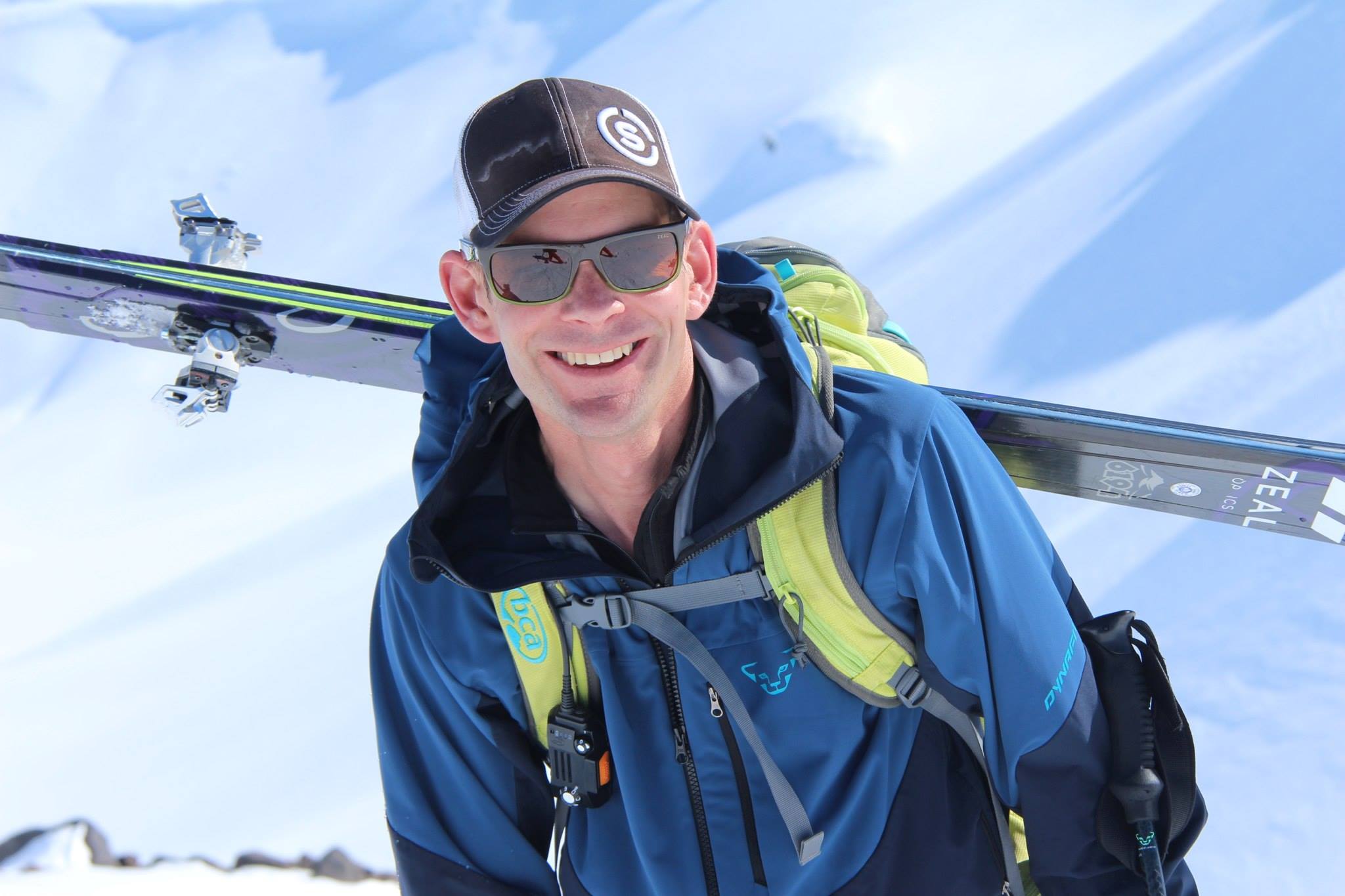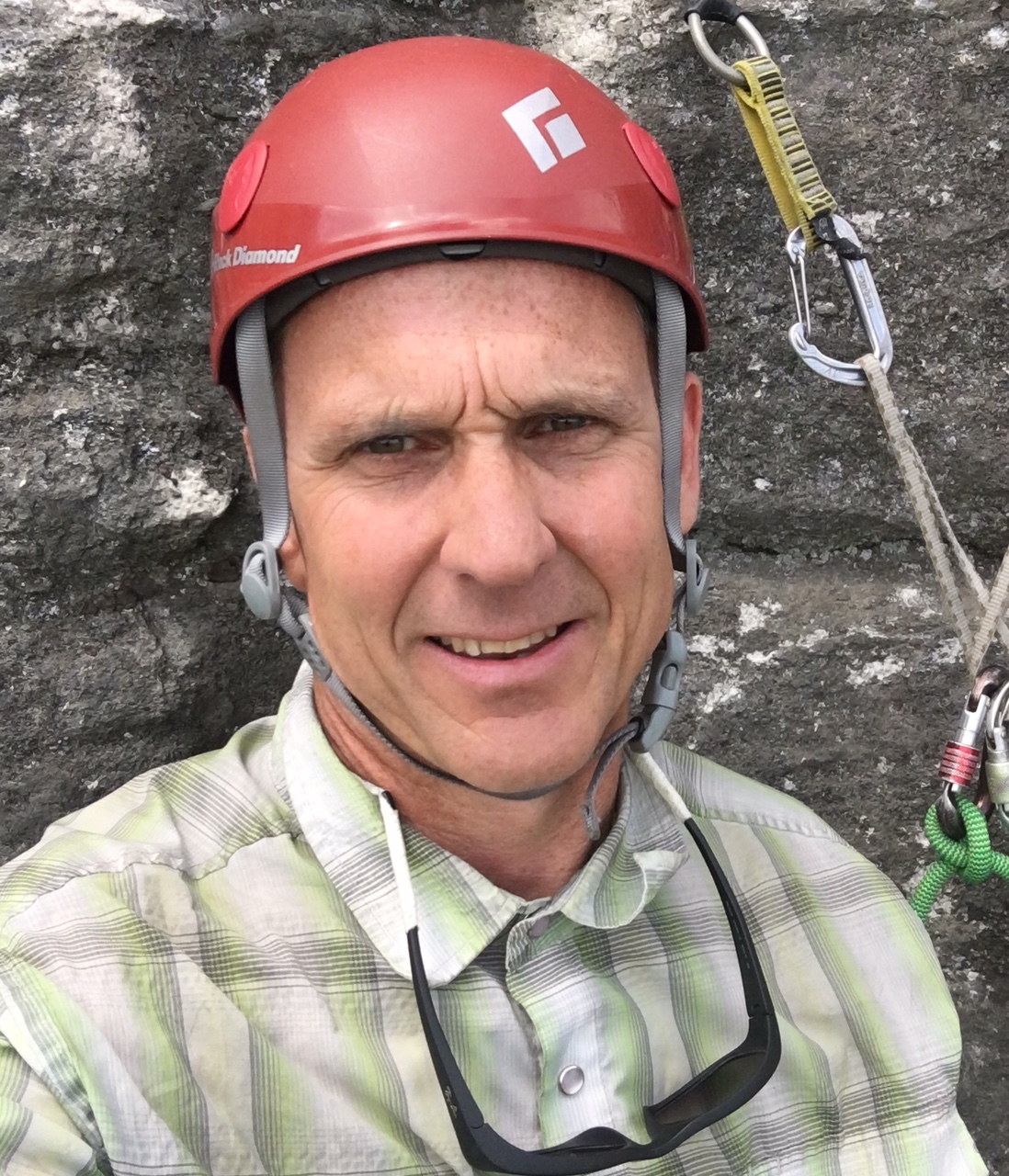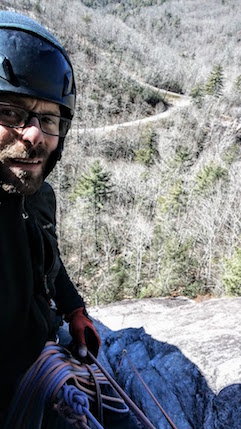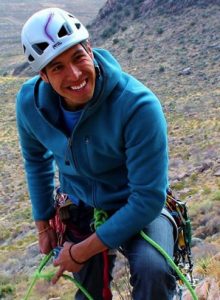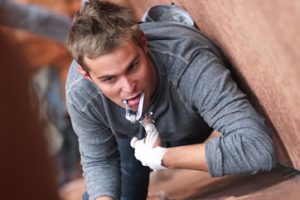Mike Hattrup Scholarship Recipient on the Benefits of Mentorship
 By Chris Marshall, recipient of the Mike Hattrup Scholarship
By Chris Marshall, recipient of the Mike Hattrup Scholarship
Throughout my career and progression to become a ski guide, avalanche forecaster, and educator, mentorship has played a crucial role in my development. I find myself seeking out mentors to pick discuss, techniques, and personal experiences, ultimately wishing to identify with, and emulate those that I have deep respect for. Serving as role models, my mentors have proven pivotal in the growth of my technical skills, situational decision making, judgment, and thus, risk management. While one may gain degrees of knowledge on these subjects through a pure theoretical understanding, the contextual exploration of these topics remains the greatest teacher. I find mentorship through participation in AMGA programs, and my experience in the 2014 Advanced Ski Guides Course and Aspirant Exam highlighted the importance of this process.
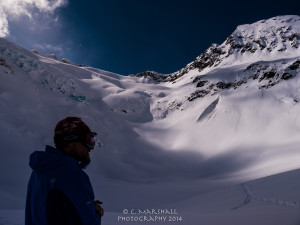 Anecdotally, it holds true that most individuals that are in pursuit of either single discipline or mountain guide certification learn and succeed through experiential education. One often hears the phrase “learning by doing” used as a simplistic definition of experiential education. While both “learning” and “doing” are integral components of experiential education, the core principal of this concept is missing. As the philosopher Socrates states “Education is the kindling of a flame, not the filling of a vessel”. The message here is that education provides a spark to encourage personal investigation and growth through the process of learning. On the ASGC/AE, we, as candidates, were not treated as simply recipients of knowledge, but rather as collective pools of information. We were encouraged to let our passion and interest be the driving force behind bettering ourselves through education and mentorship. The AMGA process stretches the “typical” hierarchy of mentorship and encourages peer-to-peer learning. As John Tait (2003) suggests, “the goal of any mentorship activities should be to create an environment that allows new associates to progress as rapidly as possible along the learning curve and mature their practice skills”. Learning from both instructors and peers made this possible.
Anecdotally, it holds true that most individuals that are in pursuit of either single discipline or mountain guide certification learn and succeed through experiential education. One often hears the phrase “learning by doing” used as a simplistic definition of experiential education. While both “learning” and “doing” are integral components of experiential education, the core principal of this concept is missing. As the philosopher Socrates states “Education is the kindling of a flame, not the filling of a vessel”. The message here is that education provides a spark to encourage personal investigation and growth through the process of learning. On the ASGC/AE, we, as candidates, were not treated as simply recipients of knowledge, but rather as collective pools of information. We were encouraged to let our passion and interest be the driving force behind bettering ourselves through education and mentorship. The AMGA process stretches the “typical” hierarchy of mentorship and encourages peer-to-peer learning. As John Tait (2003) suggests, “the goal of any mentorship activities should be to create an environment that allows new associates to progress as rapidly as possible along the learning curve and mature their practice skills”. Learning from both instructors and peers made this possible.
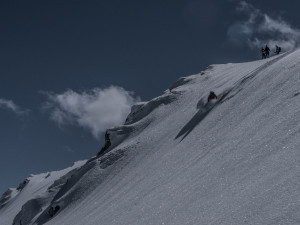 Involvement in AMGA programs continually reaffirms the importance of peer mentorship as foundational in my educational growth. While finish each course with a wealth of new knowledge and perspectives from mentors in the instructor team, the process of working through complex decision making and problem solving with peers enhances the educational value of the AMGA experience tremendously. The process of training and debriefing with an experienced peer group contributes to collective knowledge, building perspective and experience infinitely faster than could be done on an individual level. Trust, teamwork, and camaraderie are built through peer mentorship, creating an atmosphere where diverse opinions and perspectives are valued and welcomed. Individuals’ strengths are highlighted, and we all have something to offer and something to learn.
Involvement in AMGA programs continually reaffirms the importance of peer mentorship as foundational in my educational growth. While finish each course with a wealth of new knowledge and perspectives from mentors in the instructor team, the process of working through complex decision making and problem solving with peers enhances the educational value of the AMGA experience tremendously. The process of training and debriefing with an experienced peer group contributes to collective knowledge, building perspective and experience infinitely faster than could be done on an individual level. Trust, teamwork, and camaraderie are built through peer mentorship, creating an atmosphere where diverse opinions and perspectives are valued and welcomed. Individuals’ strengths are highlighted, and we all have something to offer and something to learn.
Describing mentorship within the veterinary medicine community, John Tait (2003) explains that “new veterinary graduates and new practice owners are dropped suddenly into new and unfamiliar roles and face the challenge of high expectations, information overload, and little time to learn to become master of all tasks”. As candidates on the ASGC/AE, this sounded like what we had signed up for. Through the support of each other, information sharing, and honest feedback, combined with the watchful eye of the instructor team, our experience with high expectations, information overload, and little time was overwhelmingly beneficial.
I walked away from this course challenged, tired, and proud. Moreover, I leave inspired by my mentors and the growth that I have experienced through their help. A big thanks to the instructors and candidates- I couldn’t have done it without you. A huge thanks to the AMGA and the Mike Hattrup Scholarship for making this an awesome and educative experience.








